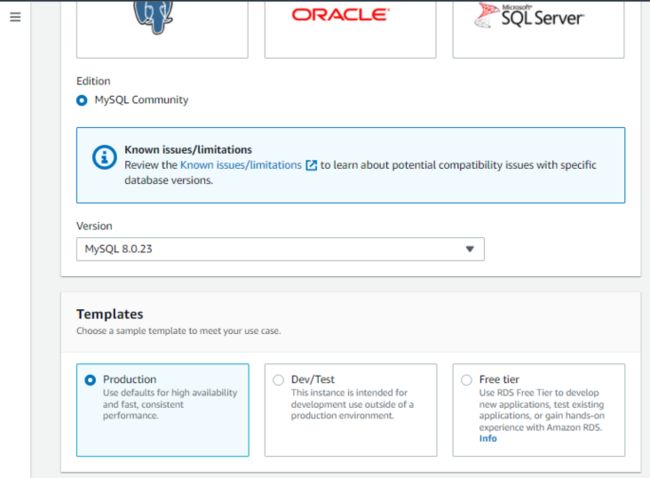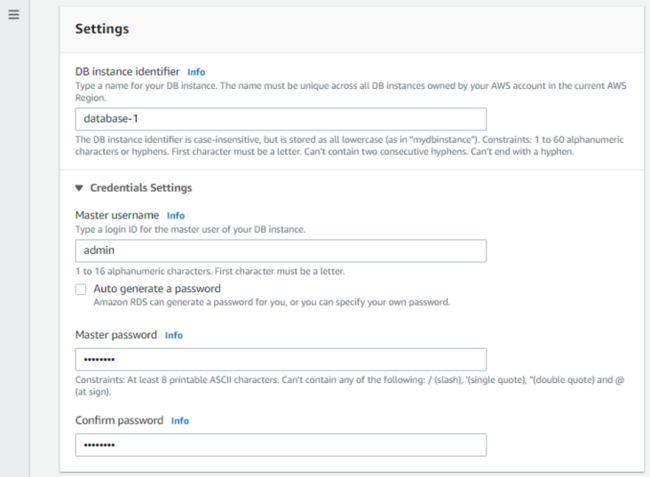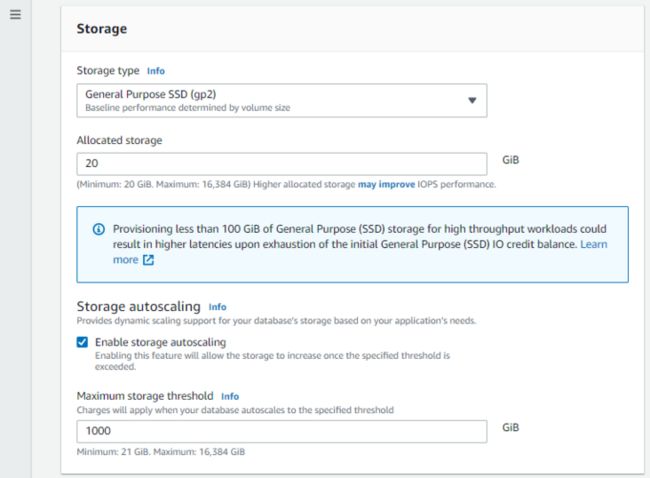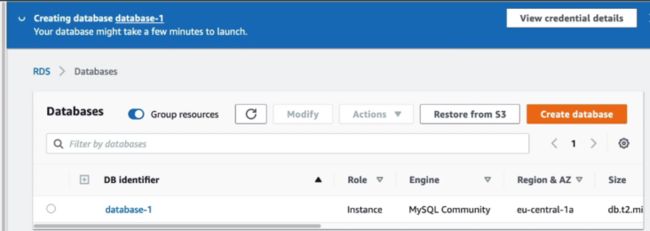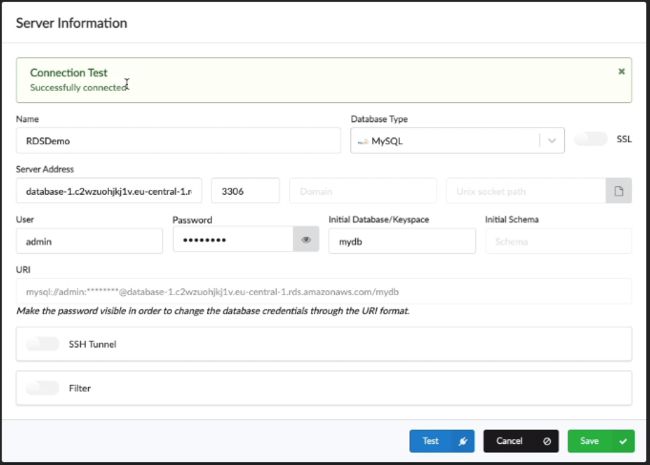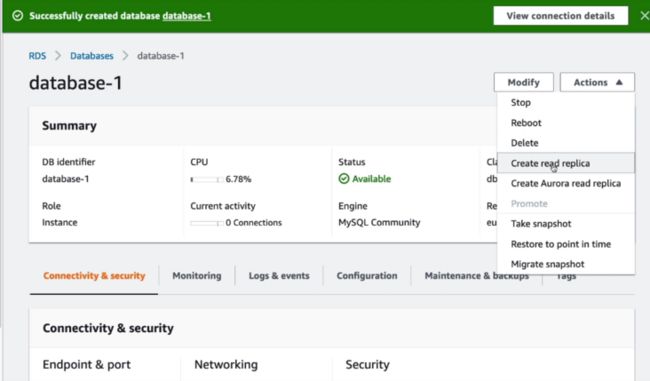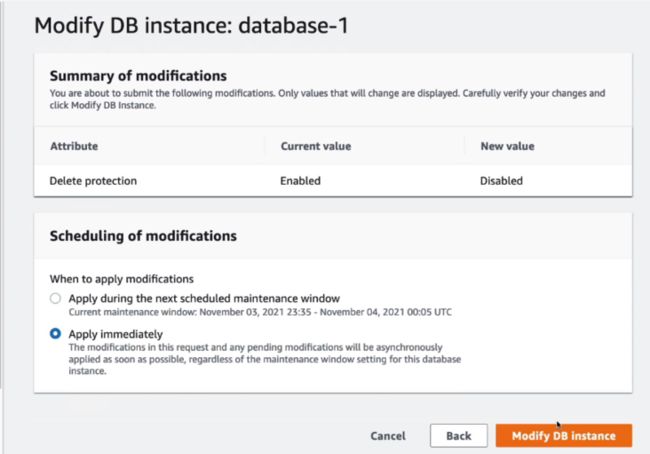1. Create a RDS
Standard create is to see all the options and Easy create is to go fast over it.
There are templates we can specify to meet our use case, which are going to be pre-filling some configuration parameters in here.
Choose Production because we want to see all the options. But we'll make sure to choose an instance that is compliant with using the Free tier of AWS RDS.
We need to include a previous generation and choose dbt2.micro.
This is to make sure that you remain within the free tier.
To remain within the free tier yet again, we need to choose a general purpose SSD type.
When we select Enable storage autoscaling, this provides dynamic scaling support for our database storage.
The more we use our storage, if we get close to 20 gigabytes automatically, the storage will be increased by AWS without us doing anything.
If we did enable multi-AZ, we would get a standby instance for our RDS database, which is recommended for production usage.
And this standby instance is going to be here for data redundancy. In case we have I/O freezes for backups, and to minimize latency spikes during backups as well.
It's not something that gets used by applications, it's something that in case our main instance has an issue or a reboot or something like this.
So for now we'll disable multi-AZ.
Select Public access because we want to be able to connect to and test our database publicly.
We have the end point right here and the port 3306, and it's linked to a security group.
The security group has an inbound rule on TCP port 3306 coming from just our IP address.
2. Install the SQLECTRON
Take the end point which is showed above and we're going to connect to it using Sqlectron.
If the connection test is not successful, please have a look at whether or not the database was set to be a public database, or, have a look at the security group settings to make sure that our IP is allowed in.
3. Create a Read Replica
4. Delete the Database
We go to Modify, disable the Delete protection setting.
Then delete the database in the management console by selecting delete action.

